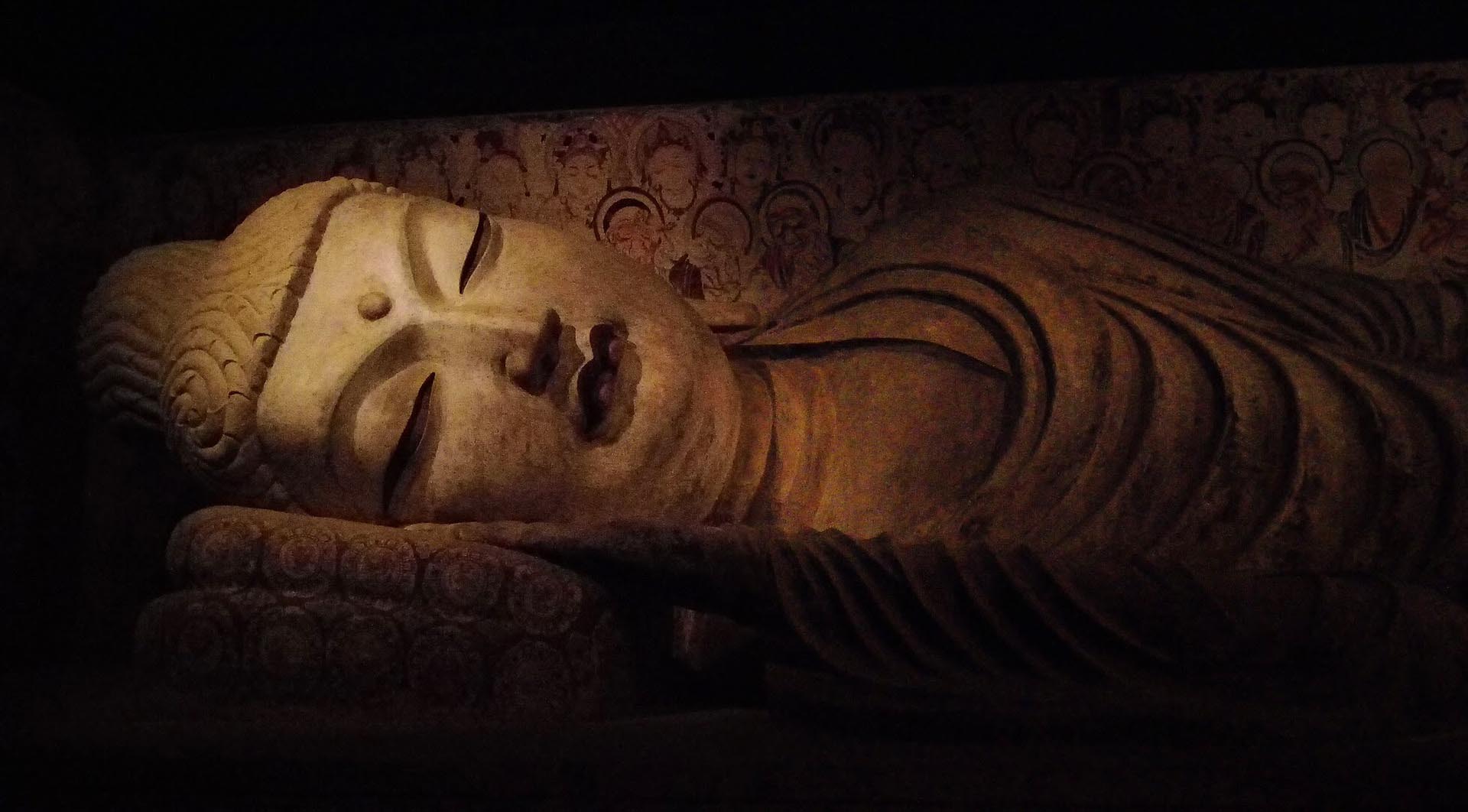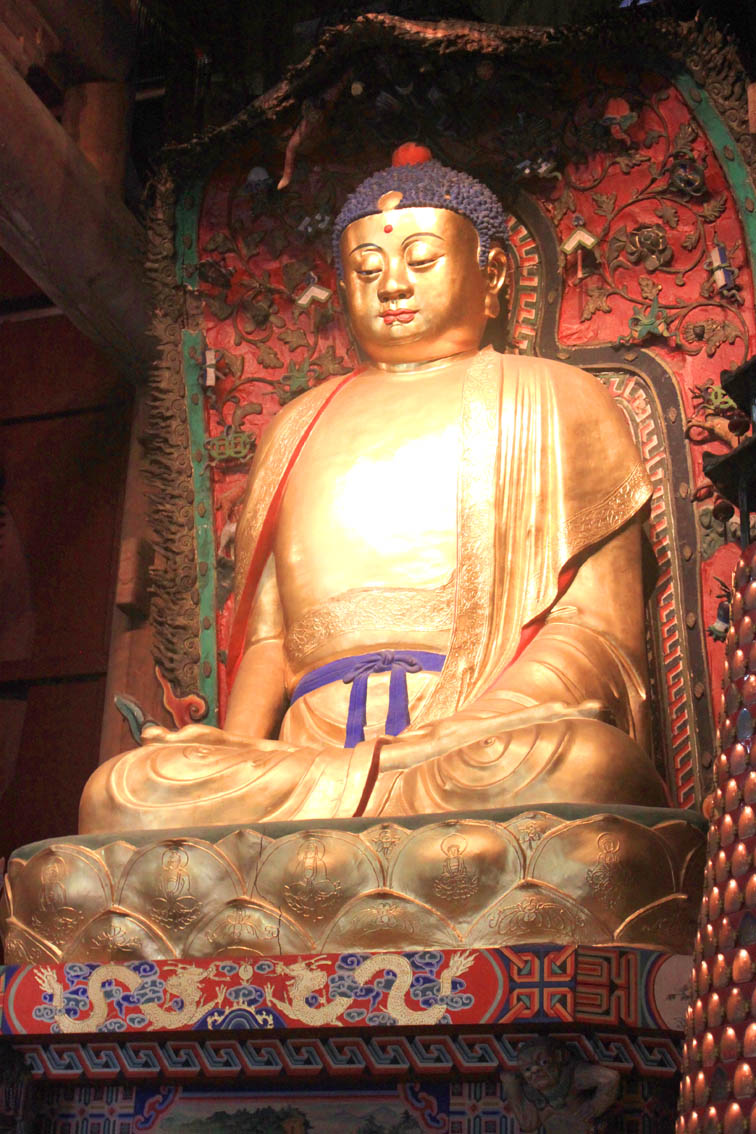Buddhism is one of the philosophical-religious currents that has permeated the Chinese people throughout history, and this is even more remarkable considering that it has been the only foreign religion that has been successful. Siddharta Gautama the Buddha was a historical character who lived in India and whose teachings spread throughout Asia and, in modern times, all over the globe.

Siddharta was born in the 6th century B.C., at a time known as the Axial Age, in what today is the Nepalese village of Lumbini. Son of King Sudhodana and Queen Maya of the Sakya clan, Prince Siddhartha was the legitimate heir of the kingdom. Before his birth, several astrologers and visionaries from various places were summoned before the king to predict the future of his son. One of them claimed that the child was destined to become either the greatest sovereign of all time, or an ascetic whose teachings would help all beings to achieve liberation.
Sudhodana, wishing for his son a future as monarch, endeavored to keep the young man inside the palace, pleased and distracted by earthly pleasures and covering with a thick veil the hardships and difficulties suffered by the people. Thus, Siddhartha grew up, and excelled in multiple disciplines, as befitted a good prince. As expected of him, he took a wife, Yasodhara, and together they had a son, whom they called Rahula. But one day, behind his father's back, Siddhartha decided to leave the palace to see how his people lived.
A visionary claimed that Siddharta was destined to become either the greatest sovereign of all time, or an ascetic.
Accompanied by his faithful servant Channa, he ventured outside the palace on four occasions; in the first, Siddhartha, meeting an old man, hunched and wrinkled, he wondered what was happening to that man. Channa explained that he was an old man, and that old age is a state from which no one is exempt.
On the second trip, Siddhartha found a sick man; Channa made him understand that no one is alien to disease, and that we all have to go through it sometime in our lives. On the third trip, the prince saw how a group of men carried a corpse, surrounded by the consternation of those present. When his servant explained to him what death is, and that no one can get rid of it either, Siddhartha was very impressed.
In the fourth time, Siddhartha met an ascetic with a calm face, and was immediately attracted by the peace he seemed to have. He had had contact with three realities that he had never known, but which can be summed up in one: suffering; but he had also intuited the existence of a way to overcome it.
One night, determined to find an answer to suffering, the prince left the palace, his relatives and his belongings, and went into the woods, shedding his ostentatious clothes and beginning a new life as a hermit. Siddharta sought the company of the great masters of his time to study with them, but soon reached his knowledge and, feeling limited, ended up abandoning them to seek the truth for himself. Then began a time of ascetic practices, fasting and corporal mortifications, along with a group of followers.
One day, his body gave no more of himself and he fell weak. A girl found him by the river and offered him some food and milk. Siddhartha realized that the abuse of the body does not lead to the liberation of suffering, and accepted what the girl offered him. His followers abandoned him for having accepted food and renounced ascesis.
Siddhartha continued on his way, alone again, until one day, he sat under a tree determined not to rise until he had reached the truth. After long hours of meditation and contemplation, in which various demons tried to tempt him, Siddharta overcame all obstacles and attained enlightenment in Boddhgaya, India. Thus he became known as Buddha (The Awakened One) and decided to share his discovery with the rest of the world.
After attaining enlightenment in Boddhgaya, Siddharta pronounced the so-called "Sermon of Benares", in which he exposed the Four Noble Truths.
Afterwards, he reunited with his old ascetic friends to share with them his discovery and reveal the Middle Way, which does not indulge in earthly pleasures or lose itself in extreme austerities. In front of them, the Buddha pronounced the so-called "Sermon of Benares", in which he exposed the Four Noble Truths on which his teaching is based: the truth of suffering, the origin of suffering, the cessation of suffering and the way to cessation. The first focuses on what is suffering and what causes it: birth, old age, illness and death; anger, fear, envy and desire... The second traces the origin of all suffering to ignorance, understood not as the lack of knowledge but as not knowing how to live properly. The cessation of suffering is the eradication of that ignorance through understanding; and the way to that cessation is what he called the Noble Eightfold Path: right understanding, right thought, right word, right action, right means of life, right effort, right attention and right concentration.
From this simple premise, he developed a much more complex system of thought, an authentic "science of the mind". After the sermon of Benares, a whole congregation of followers began to form around the Buddha, what would come to be called the Buddhist Sangha (community of practitioners).
During his life his teachings spread throughout India, and later his ideas came to China through the Silk Road.
The Buddha left this world to enter Nirvana at eighty years of age, surrounded by a community of monks among whom were several members of his family, including his son Rahula.

Image of the Buddha entering parinirvana (Nirvana after death).
The original teaching was strictly based on reason and personal practice, on empirical testing. Siddhartha always insisted that no one should accept his words as a dogma, but that it must be verified by individual practice, and also refused to answer questions about God or about metaphysical matters, considering them irrelevant to practice. The entire complex system of Buddhist thought and philosophy is based on a careful observation of the nature of the human mind and its functioning; the Buddha could have been the first psychologist in history; a visionary who anticipated his time.
However, shortly after his death Buddhism became a religion, and little by little it started to focus on cult and worship of divinities.
More important is the postponement of enlightenment for a future life. Buddha never affirmed the existence of reincarnation, although he did not deny it either, probably because of the extent this belief was rooted in the society of his time. In later Buddhism, reincarnation is an idea that is not questioned, and it gives birth to the idea of the accumulation of meritorious actions, that is, karma, in order to obtain a better reincarnation that brings us closer to Nirvana.
Later on, Bodhidharma's Chan Buddhism will regain the emphasis on the practice of meditation, stripping deities and rituals, and considering that enlightenment can be achieved in this life, with personal practice as the only possible way.

Chinese representation of the Buddha.
